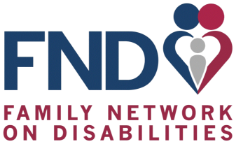INformation Hub
Considering the Needs of Students Who Are Deaf or Hard of Hearing
Considering the Needs of Students Who Are Deaf or Hard of Hearing
A resource for IEP Teams
A legacy resource from NICHCY
December 2010
This checklist is designed to help IEP teams consider the communication-related needs of students who are deaf or hard of hearing. The checklist is included as a Resource for Trainers in Theme D of NICHCY’s Building the Legacy training curriculum on IDEA. It was adapted from the Nebraska Department of Education’s Nebraska IEP Technical Assistance Guide (1998, September). That document is no longer available online, but a 2014 updated version is, at: http://www.education.ne.gov/sped/technicalassist/Setting%20Goals%20Achieving%20Results%203-11-14.pdf
_____________________
How Do We Do It?
One way the IEP Team can address the creation of a communication plan is to work through the following checklist during the IEP meeting. This communication plan, in checklist form, is designed to meet the letter of the law.
1. The child’s communication mode, receptively, appears to be:
__ Aural-Oral (listening, speech reading, and speaking)
__ Total Communication (including sign language)
__ Other (please explain)
The child’s communication mode, expressively, appears to be:
__ Aural-Oral (listening, speech reading, and speaking)
__ Total Communication (including sign language)
__ Other (please explain)
Is this mode of communication efficient and sufficient for this child?
__ Yes __ No
2. What are the child’s language needs? (Check all that apply)
__ The child’s written language is on grade level with hearing peers
__ The child’s written language is below grade level with hearing peers
How far below?
__ The child’s spoken language appears to be on grade level with hearing peers (child does not utilize sign language)
__ The child’s spoken language appears to be below grade level with hearing peers (child does not utilize sign language)
How far below?
__ The child’s signed language appears to be on grade level with hearing peers
__ The child’s signed language appears to be below grade level with hearing peers
How far below?
__ The child’s comprehension (auditory or sign language) appears to be on grade level with hearing peers
__ The child’s comprehension (auditory or sign language) appears to be below grade level with hearing peers
How far below?
What are some strategies that can be used to help the child attain language commensurate with his or her hearing peers?
3. Does the child have opportunities for direct communication with peers in his or her language and communication mode?
__ Yes Please explain:
__ No Please explain:
4. Does the child have opportunities for direct communication with professional personnel in his or her language and communication mode? (Professional personnel includes, but is not limited to: audiologist, educational interpreter, general education teacher, occupational therapist, psychologist, speech language pathologist, social worker, teacher aide, educator of deaf/hard of hearing, etc.)
__ Yes, with the following personnel:
How have personnel demonstrated proficiency in the child’s communication mode?
__ No, with the following personnel:
What is the plan to remediate this issue?
5. The child’s academic level is:
__ commensurate with hearing peers
__ 1-2 years below hearing peers
__ more than 2 years below hearing peers
(If academic level is below hearing peers, please explain. Also include strategies to remediate this situation.)
6. Has the IEP Team examined the child’s full range of needs, including opportunities for direct instruction in his or her language and communication mode? Please explain:
7. Have all potential service options within the LEA, as well as those available by contract, been explained during the IEP meeting?
__ Yes
__ No
(If no, why not?)
How Do We Know We Are Doing It Right?
The communication plan:
__ Is addressed by all members of the IEP Team.
__ Is completed during the IEP meeting.
__ Provides information regarding the student’s mode of communication.
__ Addresses the student’s language needs.
__ Addresses the student’s communication needs.
__ Addresses the student’s academic level.
__ Addresses the student’s full range of needs.
__ Describes opportunities for direct communication with peers and professionals.
__ Describes opportunities for direct instruction in the child’s language and communication mode.
__ Incorporates all of this information into the development of the IEP.
SOURCE ARTICLE: National Dissemination Center for Children with Disabilities & Nebraska Department of Education
Give us a call at (727) 523-1130 or (800) 825-5736 or request a callback by clicking below.
311 South Missouri Ave, Clearwater, FL 33756
(727) 523-1130
(800) 825-5736

